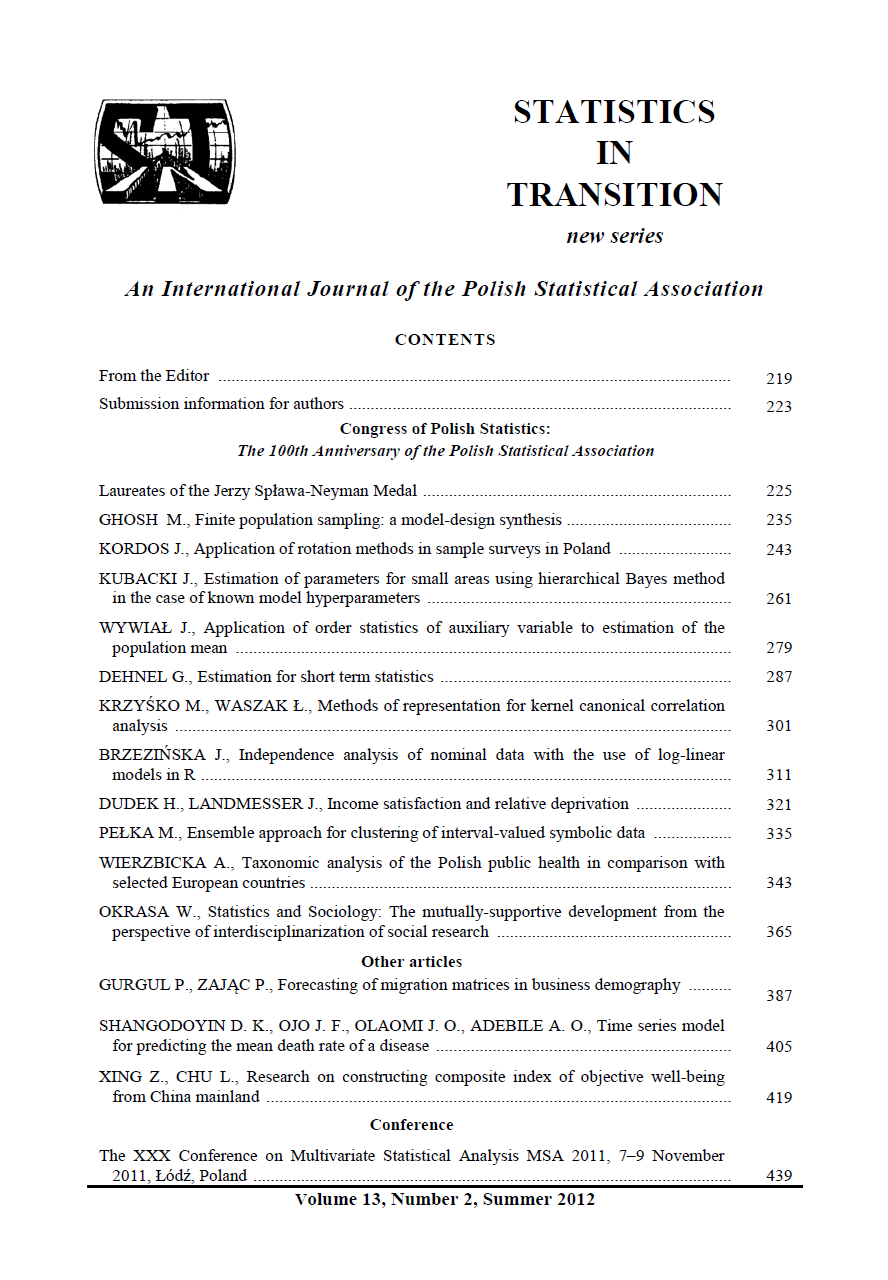ARTICLE
ABSTRACT
Ensemble approach has been applied with a success to regression and discrimination tasks [see for example Gatnar 2008]. Nevertheless, the idea of ensemble approach, that is combining (aggregating) the results of many base models, can be applied to cluster analysis of symbolic data. The aim of the article is to present suitable ensemble clustering based on symbolic data. The empirical part of the paper presents results simulation studies (based on artificial data sets with known cluster structure) of ensemble clustering based on co-occurrence matrix for symbolic interval-valued data, compared with single clustering method. The results are compared according to corrected Rand index.
KEYWORDS
Ensemble clustering; interval-valued symbolic data
REFERENCES
BILLARD, L., DIDAY E. (2006). Symbolic Data Analysis: Conceptual Statistics and Data Mining, Wiley, Chichester.
BOCK, H.-H., DIDAY, E. (red.) (2000). Analysis of symbolic data. Explanatory methods for extracting statistical information from complex data, Springer Verlag, Berlin-Heidelberg.
BREIMAN, L. (1996). Bagging predictors, Machine Learning, 24(2), p. 123-140.
DE CARVALHO, F.A.T., LECHEVALLIER, Y., DE MELO, F.M. (2012).Partitioning hard clustering algorithms based on multiple dissimilarity matrices, Pattern Recognition, 45(1), p. 447-464.
FERN, X.Z., BRODLEY, C.E. (2004). Solving cluster ensemble problems by bipartite graph partitioning, Proceedings of the 21st International Conference on Machine Learning, Canada.
FRED, A.L.N., JAIN, A.K. (2005). Combining multiple clustering using evidence accumulation, IEEE Transaction on Pattern Analysis and Machine Intelligence, Vol. 27, p. 835-850.
GAHEMI, R., SULAIMAN, N., IBRAHIM, H., MUSTAPHA, N. (2009).A survey: Clustering ensemble techniques [in:] Proceedings of World Academy of Science, Engineering and Technology, Vol. 38, p. 636-645.
GATNAR, E. (2008). Podejście wielomodelowe w zagadnieniach dyskryminacji i regresji, Wydawnictwo Naukowe PWN, Warszawa.
GATNAR, E., WALESIAK, M. (red.) (2004). Metody statystycznej analizy wielowymiarowej w badaniach marketingowych, Wydawnictwo AE, Wrocław.
HORNIK, K. (2005). A clue for cluster ensembles, Journal of Statistical Software, 14, 65-72.
NG, A., JORDAN, M., WEISS, Y. (2002). On spectral clustering: analysis and an algorithm, [In:] T. Dietterich, S. Becker, Z. Ghahramani (Eds.), Advances in Neural Information Processing Systems 14, MIT Press, 849-856.
STREHL, A., GHOSH, J. (2002). Cluster ensembles – A knowledge reuse framework for combining multiple partitions, Journal of Machine Learning Research, 3, p. 583-618
